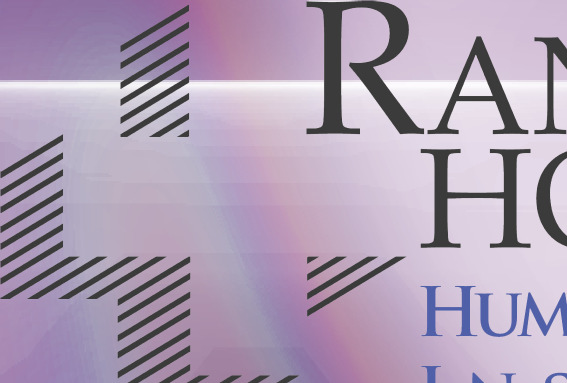Concussion parent manual.indd



Concussion Guide
The Human Motion Institute at Randolph Hospital
Concussion Guide for Parents
GFELLER-WALLER CONCUSSION AWARENESS ACT
The Gfeller-Waller Concussion Awareness Act was created to help educate, and prepare for
concussions in high school and middle school athletics. The law is named for two North Carolina football players who died as a result of concussion related injury and whose deaths could have been prevented with proper preparation.
Matthew Gfeller suffered a severe helmet to helmet collision during his fi rst varsity football
game at RJ Reynolds high school. Matthew never regained consciousness and died two days later. The accident caused a fatal traumatic brain injury.
Jaquan Waller suffered a concussion at a practice at JH Rose High School. He played in a
game two days later, without being medically cleared, and collapsed on the sideline. He died the following day as a result of Second Impact Syndrome.
The Gfeller-Waller Concussion Awareness Act has three main sections:
1. Education: Each school shall develop a concussion safety training program. In order to be in
compliance with the portion of the law, Concussion Information for Coaches/School Nurses/School
volunteers and Concussion Information for Student Athlete/Parent forms are given as education
materials. Each person who receives those materials is required to complete and sign the
Concussion Statement form.
2. Emergency Action Plan and Post-concussion Protocol: Each school is required to have an Emer-
gency Action Plan in case of any serious athletic injury or illness. Included in the Emergency Action
Plan is a post-concussion protocol which states the actions that will be taken in the case of suspect-
ed concussion. By law, an athlete who has a suspected concussion shall be removed from the activ-
ity and WILL NOT be allowed to play or practice on the same day.
3. Clearance/Return to Play following a Concussion: An athlete with
a suspected concussion must be evaluated and receive written
clearance by a medical professional trained in concussion
management before he or she returns to practice or play. The
Gfeller-Waller Clearance/NCHSAA Return to Play Form must be
completed by a physician and returned to the Athletic Trainer, First
Responder, or Coach. In order to be in compliance with the law, these
forms must be kept on fi le.
The Human Motion Institute at Randolph Hospital
Concussion Guide for Parents
The majority of Randolph County and Asheboro City School athletes are under the age of 18.
It is important to properly notify and educate the parents of these athletes when there is a suspected concussion. The following will aid in educating you, as a parent, on the proper steps in providing care if your student athlete has a suspected concussion.
CONCUSSION BASICS: SIGNS AND SYMPTOMS
During the upcoming athletic season, your student athlete may be assessed for a suspected concussion. A concussion is a mild traumatic brain injury and should be taken seriously. Such a brain injury may present with several different signs and symptoms. These signs and symptoms may change and progress over several days and may present as follows:
Pressure in head
Balance Problems
Sensitivity to Light
Diffi culty Concentrating
Sensitivity to Noise
WHEN TO SEEK IMMEDIATE MEDICAL ATTENTION
Please seek further medical care if your student athlete has an increase in symptoms,
seizures, neck pain, repeated vomiting, slurred speech, weakness or numbness in arms or legs, unusual behavior changes, unequal pupil size, fl uid from the ears or nose, or loss of consciousness. These symptoms may indicate critical injury and deteriorating neurological function.
The Human Motion Institute at Randolph Hospital
Concussion Guide for Parents
HOME INSTRUCTIONS
After sustaining a concussion, the best rehabilitation is physical and cognitive (mental) rest.
This means moving and thinking as little as possible. The following are recommendations for your student athlete:
n Get plenty of rest/sleep. There is no need to wake up frequently unless the student athlete experienced loss of consciousness.
n Use an ice pack on the head or neck for comfort.
n If symptoms include nausea/vomiting, eat a light diet. Avoid spicy foods.
n Drink plenty of fl uids. NO alcohol.
n The student athlete can take acetaminophen (Tylenol). DO NOT use anti-infl ammatory
medicines such as ibuprofen/Advil, aspirin, naproxen/Aleve, as they may mask symptoms or make
them worse. It is recommend that NO medications are taken for the fi rst 10 days after injury.
Consult your physician regarding any medication questions or concerns.
n The student athlete SHOULD NOT drive while symptomatic.
n The student athlete SHOULD NOT exercise or lift weights while symptomatic. This includes PE
class, weight lifting, dance or other classes involving physical activity.
n Limit use of electronics while symptomatic.
n Inform teachers that the student athlete has had a concussion. The student athlete may have increased problems paying attention or con-centrating and they may need longer to complete a task.
If the student athlete is experiencing any symptoms as a result
of a concussion, he or she is considered to be at Exertion Level 0.
The Human Motion Institute at Randolph Hospital
Concussion Guide for Parents
WHAT IS EXERTION LEVEL ZERO?
In order to return to full competition (Level 6), the student athlete must progress through
levels 0 to 5 of exertion. Level 0 means that the student athlete is suspected to have a concussion
and that he or she is displaying one or more of the signs or symptoms of a concussion. The student
athlete should remain on Level 0 until he or she is evaluated by a physician and that physician
permits progression to Level 1.
Level 0 may also be called a period of rest. A concussion, like any other injury needs time to
heal. Because a concussion is an injury to the brain, the healing process includes both physical AND mental rest. Lack of rest will cause a longer period of healing time and may cause a longer time until full recovery.
The student athlete at exertion Level 0 should practice the following recommendations:
Physical Rest
It is important to limit any activity that may increase blood fl ow or heart rate. Most of the
following activities increase the heart rate, which increases blood fl ow to the brain and may cause symptoms to increase.
n Avoid positions that put the head lower than the rest of the body. This increases blood fl ow to the brain.
n Limit excessive motion. If he/she has to move, move in slow controlled motions as to not increase heart rate. n Avoid lifting or moving heavy objects.
Mental Rest
The only time a person can achieve complete mental rest is during sleep. Each person has a
different mental tolerance. If a mental activity increases symptoms, those are the activities the student athlete should limit. Limit the following mentally stimulating activities:
n Using a computern Watching TVn Using a cell phone or textingn Readingn Playing Video Gamesn Listening to loud music
The Human Motion Institute at Randolph Hospital
Concussion Guide for Parents
CONCUSSION RETURN TO PLAY GUIDE
The following information may help answer some of your questions and provide directions for follow-up
care.
Be advised that your school may participate in the ImPACT Concussion Management system.
ImPACT is a computer based testing program that takes about 30 - 45 minutes and measures attention,
verbal and visual memory, processing speed and reaction time. The student athlete may have a baseline
score of these measures on record. In the event of a concussion, a follow-up test is performed to
compare baseline results to the student athlete's current state. Please know that the ImPACT system
does NOT diagnose concussions. The student athlete's results will be sent to his/her designated
physician and will aid in the return to play decision.
The Gfeller-Waller Law requires that the student athlete be cleared by a physician (MD or DO)
before returning to play. The student athlete should see a physician after completing the ImPACT test unless instructed otherwise, and a signed Gfeller-Waller form must be returned to the Athletic Trainer, First Responder, or Coach. The Gfeller-Waller Clearance form contains physician's recommendations for sports, physical education and academics.
Return to Play
Please be aware that the student athlete will be progressed appropriately into participation. For
their safety, they will be physically exerted over AT LEAST a six day period. Progression into
participation will only occur when your child no longer has ANY concussion symptoms. A detailed
description of the levels of exertion will be provided to you upon request.
Return to Learn
Please be aware that the student athlete may not be performing at his or her typical level while
recovering from a concussion. For most students, only temporary academic adjustments are needed during recovery. Check your school's policy for concussion management. The student athlete may be eligible for a 504 plan, IEP or Transitory Impairment Plan. The type of support will differ depending on the specifi c needs of each student athlete.
Second Impact Syndrome
Second Impact Syndrome is a dangerous condition which can
occur if a student athlete returns to sports before full recovery. If a student athlete sustains a second concussive injury, even a relatively minor one, before the symptoms of the initial concussion have cleared, the consequences can be deadly.
The Human Motion Institute at Randolph Hospital
Concussion Guide for Parents
"MY CHILD MAY HAVE A CONCUSSION. NOW WHAT?"
Post Concussion Check List
[ ] A concussion is suspected. Remove your student athlete from participation for the remainder of the
day. At this time your student athlete is at Stage 0, which means complete rest. Avoid physical activity and
limit mental activity. They should be assessed for a concussion by a medical provider trained in concussion
management (This may include your school's Certifi ed Athletic Trainer).
[ ] Review Concussion Guide for Parents. This packet includes important information regarding NC State
Law, Signs and Symptoms, At Home Care, and Return to Play Guide.
[ ] Monitor and note changes in your student athlete's symptoms. Over the next few days symptoms may
come, go, and change. If there is a sudden increase in the severity of symptoms, seek immediate medical
attention.
[ ] Complete ImPACT Concussion Testing. All contact sports in Randolph County/Asheboro City High
Schools and middle school football participate in testing. Testing should be performed within 72 hours of
initial injury to obtain adequate results to measure severity of the injury.
[ ] After receiving offi cial ImPACT results, make an appointment with a physician. Once your student
athlete has completed the ImPACT test, someone from their school will notify the Concussion Hotline that
they have been tested. Offi cial ImPACT test results will be sent to the school within 24 hours of notifi cation.
If a physician's name is provided, the results will also be faxed to the physician's offi ce. Please be aware
that your student athlete's physician may request multiple re-tests before obtaining clearance.
[ ] Gfeller-Waller Clearance Form Signed. An athlete SHOULD NOT begin a return to play progression until
authorized in writing by a physician (MD or DO). Please note that Nurse Practitioners and/or Physician's
Assistants cannot sign this form without a collaborating physician's signature. The Gfeller-Waller Clearance
form provides adequate documentation and complies with state law. The form can be found at http://
gfellerwallerlaw.unc.ued/GfellerWallerLaw/gwlaw.html
[ ] Clearance form returned to Athletic Trainer, School Nurse, Athletic Director or Coach. By law, this
form must be kept on fi le at the school. Contact one of these individuals on days your student athlete is not
at school.
[ ] Begin Return to Play Progression. Per state law, once the student
athlete has been cleared by a physician, they must complete a 6 stage
return to play progression (a minimum of 6 days). The student athlete may
only begin a return to play progression once ALL concussion symptoms have
resolved.
[ ] Call with any questions or concerns. Please contact your physician,
Certifi ed Athletic Trainer, or the Concussion Hotline. The Concussion Hotline,
(336) 953-4173, is provided by the Human Motion Institute at Randolph
Hospital as a way to help ensure that all Randolph County athletes have
immediate access to proper concussion education and care.
The Human Motion Institute at Randolph Hospital
Concussion Guide for Parents
Gfeller-Waller Concussion Awareness Act
NCHSAA Concussion Management
NATA Position Statement: Management of Sport-Related Concussion
The Human Motion Institute at Randolph Hospital

To help ensure that all of Randolph County has
immediate access to proper
concussion education and care.
The Human Motion Institute at Randolph Hospital
Source: http://www.asheboro.k12.nc.us/UserFiles/Servers/Server_744237/File/For%20Parents/Concussion%20Parent%20Manual.pdf
• Editorial June 2013• 25th Pezcoller Symposium: Abstracts of oral presentations Abstracts of posters• Call for 2014 International Award For Cancer Research Pezcoller Foundation World It's with great pleasure that I can report that the re- ler Symposium entitled "Metabolism and Tumorigene- cipient of the 2013 Pezcoller Foundation-AACR Interna-
Statistical Bulletin Deaths related to drug poisoning in England and Wales, 2014 Coverage: England and WalesDate: 03 September 2015Geographical Areas: Local Authority, RegionTheme: Health and Social CareTheme: Population Office for National Statistics 1 Deaths related to drug poisoning in England and Wales, 2014 registrations 03 September 2015











